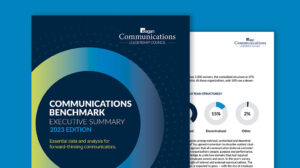A guide to more inclusive mentoring
A leadership expert shares tips on sparking and sustaining a meaningful relationship with someone who doesn’t look like you.

Mentoring is one of those wonderful things that benefits everyone involved.
But it can be a daunting proposition—especially if you want to invest in someone who doesn’t look like you. It’s hard to know how or where to start.
Troy P. Thompson, a personal development coach and leadership consultant (#BetterWithTroy), knows a thing or two about the subject. In addition to his seat on the advisory board for Pace University’s Transformative Leadership program, he also chairs the professional development committee at SEO Scholars, where he oversees program development for its executive mentors. We asked him to share guidance on how to initiate, sustain and nurture a mutually beneficial mentoring relationship.
Getting started
Of course, the era of social distancing presents new wrinkles to the mentor/mentee dynamic. But regardless of where you are, it all starts with empathetic listening.
“When mentoring someone of a different cultural background, it is abundantly important to bridge understanding, and the best way to do that is to be a good active listener,” Thompson says. “This means resisting the urge to prematurely unload advice, and taking a step back to inquire and familiarize yourself with your mentee’s worldview, self-concept and aspirations.”
That might seem counterintuitive. After all, you’re the one dispensing hard-won wisdom and career insights forged in the fires of experience, right? Save your pearls of wisdom until you’ve let your mentee speak at length, Thompson advises. It’s absolutely essential to understand more about their life experience, ambitions and career goals.
Then, and only then, will you get “the insight you need to meet your mentee where they are, and frame your guidance in a way that acknowledges their unique circumstances,” Thompson says.
Pitfalls to avoid
Aside from obvious blunders like off-color jokes or not following through with promises made, Thompson says the most common error he sees mentors making is failing to establish clear objectives and not setting a communication or check-in cadence. “Failure to do so will often result in either radio silence or a crisis management relationship where you are only contacted when things go wrong,” he says.
Thompson suggests working with your mentee to create SMART goals, “using the ‘Timely’ component as an anchor to align on meeting frequency and platform preferences,” he says.
Aside from setting SMART goals, Thompson says to anticipate giving your mentee the benefit of the doubt. Have a little grace. He says to “deploy empathy” if your mentee misses a deadline or is a bit late for a check-in. “The reason may have less to do with their commitment and more to do with personal challenges inhibiting their focus, especially during these trying times.”
If your young colleague does somehow let you down, withhold the scold. “Use the subsequent meeting as an opportunity to learn how you may be able to help them follow through, be it automated calendar reminders or text messages,” Thompson says.
Remote mentoring tips
Mentoring has traditionally been a face-to-face, same-room proposition, but it doesn’t have to be. Thompson points to recent Gallup data that shows a spike in “engaged” employees who are working from home. So it’s actually an ideal time for companies to shape or bolster their mentorship programs.
According to Thompson:
“A good first step is for your HR team to distribute a strengths assessment to junior participants to uncover potential skill gaps. This will not only provide leadership with a clear picture of how they can help, but ensure that the program’s value proposition captures the interest and explicit needs of their new mentee cohort.”
Leadership should be involved, too. Thompson adds, “It’s also important for participating leaders to understand that the programs’ success will require a two-way commitment, and that their degree of enthusiasm and engagement will set the tone for all involved.”
Hallmarks of successful mentorship programs
Thompson cites three key elements of a successful, sustainable mentoring program:
1. Strategic purpose. Mentoring works when “participants are intrinsically motivated by what the program aims to achieve, and its outcomes are aligned with the organization’s mission, values and goals,” Thompson says.
2. Strong matches. This is frequently the toughest aspect of any mentorship initiative, Thompson says, but “the survival of your program will in large part be determined by the quality of your matches.”
“This is why I advise program managers to couple strength assessments with a brief survey that captures employee hobbies, interests and activities, as it will increase the likelihood that both mentor and mentee will find common ground,”
3. Measurement. Don’t just launch an initiative and hope for the best. As Thompson says, “KPIs such as employee satisfaction, engagement, and even retention should be measured to guarantee that the program is consistently improving and adapting to the needs of the entire organization.”
Having hard data on your side is the best way to ensure your program endures.







